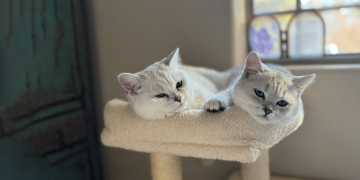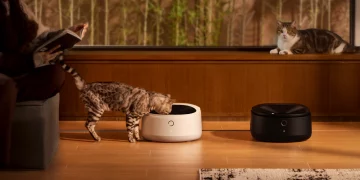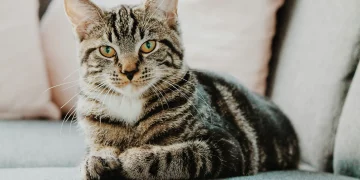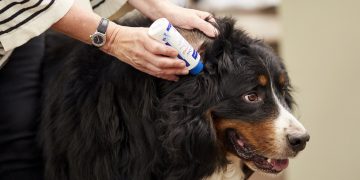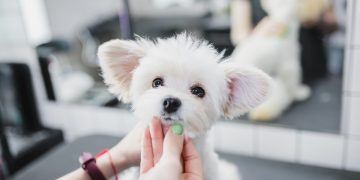Different Species, Different Clocks
Cats and dogs may share our homes and couches, but when it comes to how they eat—and when—they operate on very different biological clocks. Their feeding rhythms are shaped by evolution, metabolism, and behavior. Many mixed-pet households are tempted to simplify things by feeding cats and dogs at the same time using a unified routine. While the convenience is tempting, the reality is more complex. A one-size-fits-all feeding schedule rarely meets the needs of both species.
Understanding the key differences in feline and canine feeding behavior is the first step in designing a feeding schedule that supports long-term health, harmony, and mealtime peace. From metabolism to mealtime manners, what works for a Labrador may frustrate a Siamese, and vice versa. For households juggling kibble for two, a hybrid strategy—combining staggered timing and private feeding spaces—offers a realistic and pet-friendly solution.
Cats: Frequent Grazers With High-Protein Needs
Cats are obligate carnivores, meaning their bodies are designed to metabolize animal protein as the core of their diet. Unlike omnivorous dogs, cats lack certain enzymes to efficiently process carbohydrates. Their natural feeding behavior reflects this. In the wild, a cat will hunt and eat small prey multiple times per day. This “frequent grazer” instinct translates into a preference for several small meals throughout a 24-hour cycle.
In domestic life, this looks like nibbling, rather than gorging. Indoor cats, especially those left with dry kibble, may eat 10 to 20 times a day in small, scattered portions. Their stomachs are small and their digestion fast. Long gaps between meals can cause stress, vomiting, or even more serious conditions like hepatic lipidosis in overweight cats.
Dogs: Structured Eaters With Pack Mentality
Dogs, by contrast, are opportunistic omnivores with a pack-feeding instinct. Descended from wolves, dogs are more likely to eat one or two larger meals per day and feel satisfied. Most dogs can easily go 8 to 12 hours between meals without any discomfort, especially if their portions are well-balanced.
Unlike cats, many dogs bolt their food, making scheduled mealtimes important not only for nutrition but for safety—especially in breeds prone to bloat. Dogs often thrive on predictable feeding windows. They also tend to see food as a competitive resource, which can create tension in multi-pet households if boundaries aren’t clearly established.
Why Mixed Feeding Can Trigger Conflict
Feeding both cats and dogs on a unified schedule introduces several potential problems:
- Metabolic mismatch: Dogs are satisfied with 1–2 meals, while cats often need 3–5 small meals or free access. Forcing a cat to adapt to a dog’s schedule may lead to hunger-related stress or overeating later.
- Food theft: Dogs are notorious for stealing cat food, which is richer in protein and fat—and dangerous in excess. Cats may also nibble from dog bowls out of curiosity or anxiety, risking imbalanced nutrition.
- Territorial behavior: Many cats prefer to eat in quiet, safe zones, while dogs may treat mealtime as a social (or chaotic) event. Shared feeding areas can create stress or aggression, especially for timid cats.
- Pacing and portioning: Dogs often eat quickly and are finished before cats even begin. This leads to hovering, begging, or bowl guarding, which discourages a relaxed eating experience.
The Case for Interlaced Timing and Separate Feeding Zones
To meet the unique biological needs of both species without turning your home into a full-time feeding ground, a hybrid method works best: interlaced timing plus spatial separation.
Here’s how it can look in practice:
1. Feed Cats and Dogs at Different Times
Stagger meals so that each animal can eat in peace without feeling rushed or threatened. For example, feed your dog breakfast at 7:30 a.m., then your cat’s first meal at 8:30 a.m. Repeat this pattern in the evening.
For cats used to grazing, timed feeders can dispense food throughout the day in small, measured portions. This satisfies their need for frequent feeding without leaving food out that dogs can steal.

2. Use Separate Spaces for Feeding
Physically separate the feeding stations. Place the cat’s food on a counter, shelf, or inside a gated room with a cat-sized opening. Dogs should be fed in a quiet area of their own, away from distractions and feline temptation.
This separation doesn’t just prevent food theft—it also reduces anxiety. Each animal learns that their food is safe, reliably delivered, and not up for negotiation.
3. Incorporate Enrichment Into Cat Feeding
Because cats often need stimulation, use puzzle feeders or licking mats to slow down eating and add mental engagement. Spread small feedings over several hours using automated dispensers.
This mirrors a cat’s natural hunting rhythm and minimizes food anxiety. It also gives your dog-free feeding zones, since these devices can be placed in elevated or inaccessible areas.
4. Monitor Intake Separately
Feeding separately also allows you to monitor how much each animal is eating. In multi-pet households, unobserved feeding can mask reduced appetite, illness, or resource guarding.
If your cat begins eating less, you’ll notice immediately—rather than assuming the food was eaten by the dog. Likewise, dogs won’t be able to gorge on high-protein cat food, which can lead to pancreatitis, weight gain, or digestive upset.
5. Adjust for Age and Activity
Puppies and kittens need more frequent meals than adults, but the pacing still differs. Kittens may need four or more small meals daily, while puppies do well with three structured feedings.
Senior dogs may need smaller, more frequent meals depending on health, while older cats often struggle with digestion or dental issues, requiring easier-to-access food and slower pacing.
Feeding schedules must evolve with the life stage of each animal, which further complicates a single shared system.
What About Free Feeding?
Some owners try to solve the issue by leaving bowls out all day. While this may work for some cats, it’s rarely a good idea in mixed-pet households:
- Dogs will often overeat if given access to constant food.
- Cats may develop habits of overeating out of boredom.
- Owners can’t track how much was eaten by whom, masking early illness.
- It increases the chance of contamination, spoilage, or pest attraction.
If free feeding is necessary, limit it to cats only, using elevated bowls or RFID-controlled feeders that only open for the designated pet.
Synchronizing Through Routine, Not Timing
Rather than forcing both pets to eat simultaneously, aim for routine. Dogs and cats thrive when their environment feels predictable. You can teach both pets that meals come at certain points in the day—just not the exact same minute. Pair feeding with other structured activities: walks for dogs, playtime for cats, or enrichment puzzles post-meal.
This way, feeding becomes part of a reliable rhythm, rather than a race.
Conclusion: Different Needs, Shared Home
Trying to fit both cats and dogs into the same feeding schedule oversimplifies their nutritional, psychological, and biological needs. What looks like convenience often leads to conflict, stress, or health issues. By understanding the differences in how each species eats—and why—you can build a system that respects both without overcomplicating your routine.
Through staggered timing, designated feeding zones, and a little creativity, it’s entirely possible to feed your dog and cat harmoniously under the same roof. And when their needs are met, your home becomes not just peaceful—but purrsistently tail-wagging too.



